Kanopus V-IK
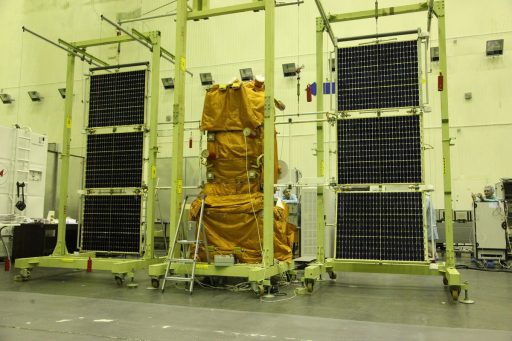
Kanopus-V-IK is a Russian Remote Earth Sensing Satellite carrying a multi-instrument package for high-resolution imaging, color imaging, multi-spectral data collection and specialized infrared capability – tasked with the collection of data for environmental monitoring, mapping, fire detection, agricultural planning, land use assessments, urban planning and fire detection.
Kanopus builds a constellation of small remote sensing spacecraft, operating alongside the large Resurs satellites that build Russia’s primary civilian Earth observation system, however, both Resurs and Kanopus have some overlap with the military and will be called upon when necessary to deliver data for defence ministry purposes.
The Kanopus Program is operated by Roscosmos and data users include the Ministry of the Russian Federation for Civil Defense, Emergencies and Elimination of Consequences of Natural Disasters, Ministry of Natural Resources of the Russian Federation, the Federal Service for Hydrometeorology and Environmental Monitoring, and the Russian Academy of Sciences.
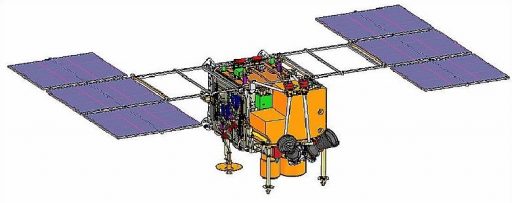
The first Kanopus V (Kanopus Vulkan) satellite was launched in July 2012. Designated Kanopus V-1, the satellite had a launch mass of 475 Kilograms and was based on the Kanopus satellite platform, designed specifically for the program. The satellite hosts a panchromatic imaging system achieving a 2.5-meter ground resolution, a full color imaging system with a 12-meter resolution and a multi-spectral imager achieving a 25-meter resolution. The BKA satellite launched alongside the first Kanopus-V satellite was almost identical in design, featuring the same instrument suite.
Kanopus ST-1 carried specialized equipment for ocean and weather research, hosting a microwave radiometer and multispectral camera. Built with Defence Ministry funds, Kanopus-ST was reportedly capable of scanning underwater areas for submarines. The craft launched atop the second Soyuz 2-1v rocket and achieved the planned orbit, but failed to separate from the upper stage due to a malfunction of the separation mechanism. The upper stage-satellite stack re-entered only a few days after launch, rendering the mission a complete loss.

Kanopus V-IK stands for ‘Kanopus-Vulkan-Infra-Krasny’ and features the standard Kanopus V equipment with the addition of an infrared imaging payload that can detect hot spots, such as fires and volcanic eruptions, as small as five meters in size.
Kanopus V-IK started out as Kanopus V No. 2 in 2011, the second regular Kanopus Vulkan satellite to be launched with four more to follow before 2020 as well as other members carrying high-resolution, cartography and radar payloads. After the launch of the first Kanopus V satellite, Roscosmos pushed the launch of Kanopus V No. 2 from 2013 into 2015 for the addition of specialized infrared sensor equipment. Named Kanopus V-IK, the satellite ended up slipping throughout 2016 with launch being repeatedly pushed back and eventually ending up in mid-2017.
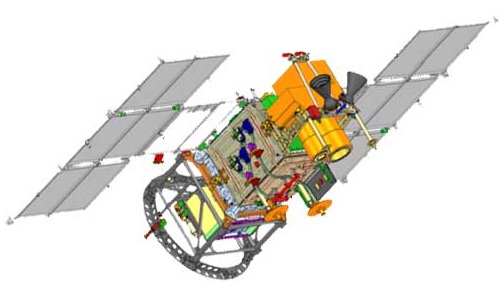
Contracted for the development of the Kanopus satellites, Russian company NPP VNIIEM elected to work with Surrey Satellite Technology Ltd. based in the United Kingdom given their experience with small satellites. Under the contract signed in 2007, SSTL is delivering three suites of satellite avionics and software plus technical support, electrical power management and batteries, onboard computers and data handling systems. The company will also provide spacecraft assembly and integration support.
The Kanopus satellite bus hosts a pair of deployable solar arrays, each comprised of three panels for a total orbit average power supply of 300 Watts. The spacecraft host precise attitude determination and control systems featuring star trackers, sun sensors, and inertial measurement systems for attitude determination and reaction wheels as primary attitude actuators.
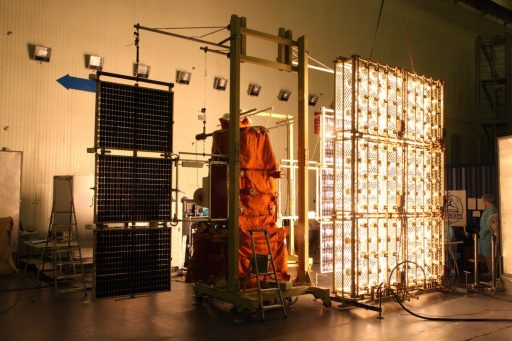
The satellite platform supports precise pointing with an attitude stability of 0.001 degrees per second and a pointing accuracy of 5 arcmin. Imaging at off-nadir angles up to +/-40 degrees can be supported, requiring 2 minutes for a slew from –40° to +40° off-nadir, allowing the satellite to conduct agile imaging operations with quick re-targeting. An onboard GNSS navigation receiver provides the satellite’s position with an accuracy of 15 meters for proper geo-tagging of acquired imagery.
The Kanopus satellites have an onboard memory of 24 gigabytes; data downlink is accomplished using an X-Band communications system operating between 8.048 and 8.382 GHz and achieving data rates up to 122.8 Megabits per second.
According to its manufacturer, Kanopus V-IK has a launch mass between 570 and 630 Kilograms of which 191 Kilograms are attributed to the four-instrument payload package. The satellite has an expected service life of five years.
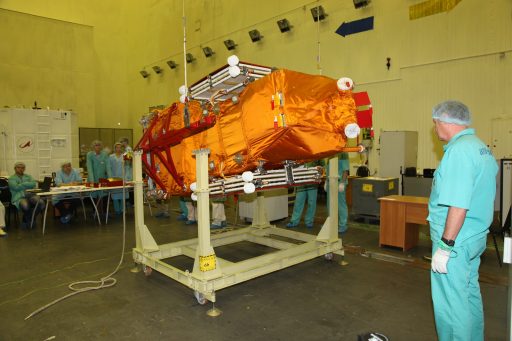
The Kanopus V-IK satellite is outfitted with four instruments – the Panchromatic Imaging System (PSS), Multispectral Imaging System (MSS), Multispectral Scanner Unit (MSU-200) and the Multi-Channel Radiometer Complex (MSU-IK-SRM).
PSS, the Panchromatic Imaging System, has the objective of collecting black-and-white imagery at medium to high resolution for environmental monitoring, agriculture, forestry and disaster monitoring. The single-channel instrument hosts a telescope with a 179.75-centimeter focal length, feeding a focal plane with a 1920 by 985-pixel detector, sensitive in the wavelength range of 520 to 850 nanometers. PSS covers a ground swath of 23.3 Kilometers and achieves a resolution of 2.1-meters for nadir imagery.
The MSS Multispectral Imaging System hosts a 35.95-centimeter telescope feeding a 1920 x 985-pixel detector array covering four spectral bands: 540-600, 630-690, 690-720 and 750-860 nanometers, extending from the green wavelengths relevant for vegetation assessments into the red spectrum and into the near infrared.
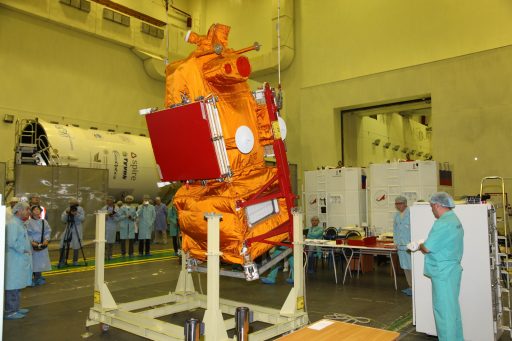
MSU-IK-SRM was added to the second Kanopus satellite to help in hot-spot and fire detection on Earth’s surface, aiming to collect imagery of a very large ground swath for a minimal revisit time from the normal Kanopus orbit, enabling the localization of forest fires and other hot spot phenomena for various operational applications.
The instrument covers two channels in the mid- and long-wave infrared spectrum: 3.5-4.1 & 8.4-9.4µm and has a ground swath of 2,000 Kilometers. The operational resolution of the IR imager is 200 x 200 meters, however, a fire as small at 5 x 5 meters within a 200 x 200m frame can be identified by the instrument, allowing a coarse localization of hot spots and fires.
The presence of MSU-200 on the Kanopus V-IK satellite has not been explicitly confirmed, though the instrument is a standard part of the K-V kit. The prototype instrument is tasked with collecting spectral data for land and sea surface assessments, covering a large number of spectral channels between 540 and 860 nanometers and reaching ground resolution of 25 meters across a swath of 250 Kilometers.
The Kanopus V-IK satellite operates from a Sun Synchronous Orbit 510 Kilometers in altitude at an inclination of 97.4 degrees, with a period of 94.8 minutes. Four more Kanopus V satellites are targeting launch by 2019 to establish a constellation of small remote sensing satellites for responsive data collection and rapid revisit time across the globe.
